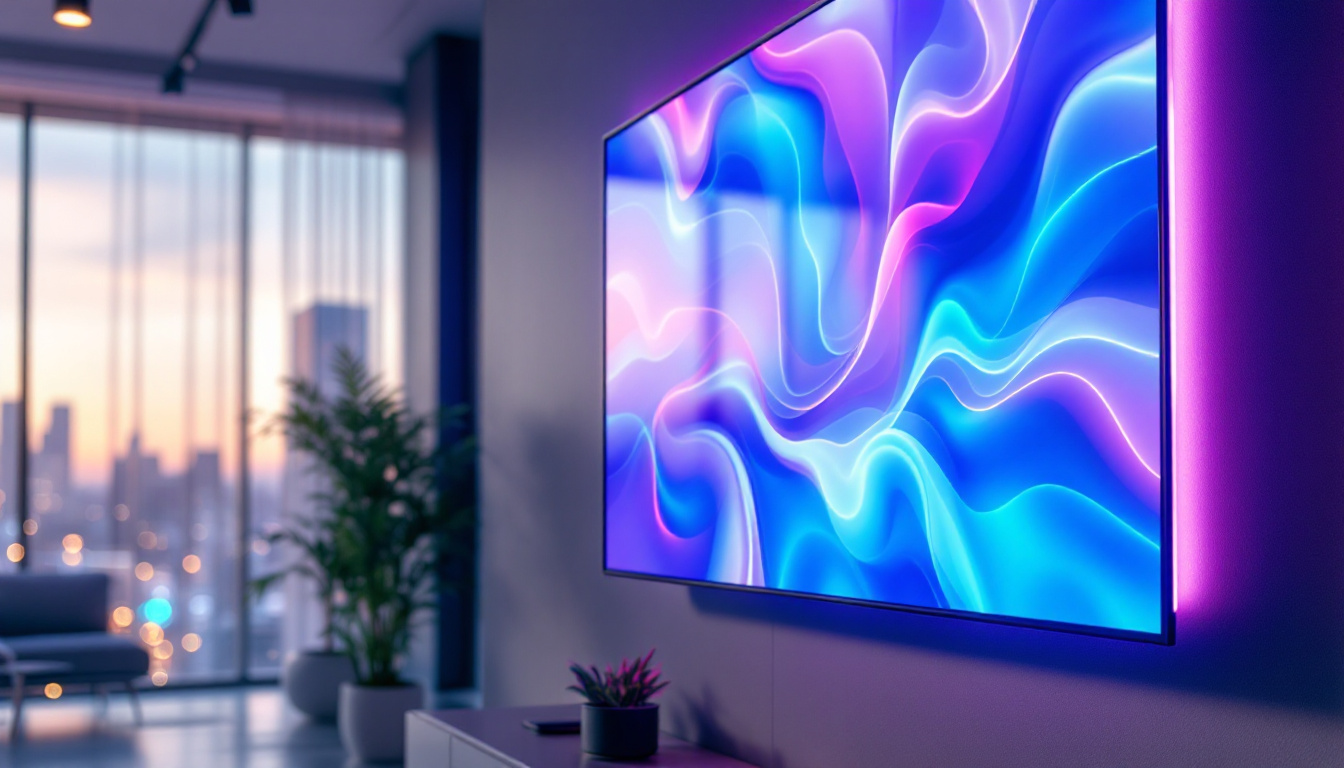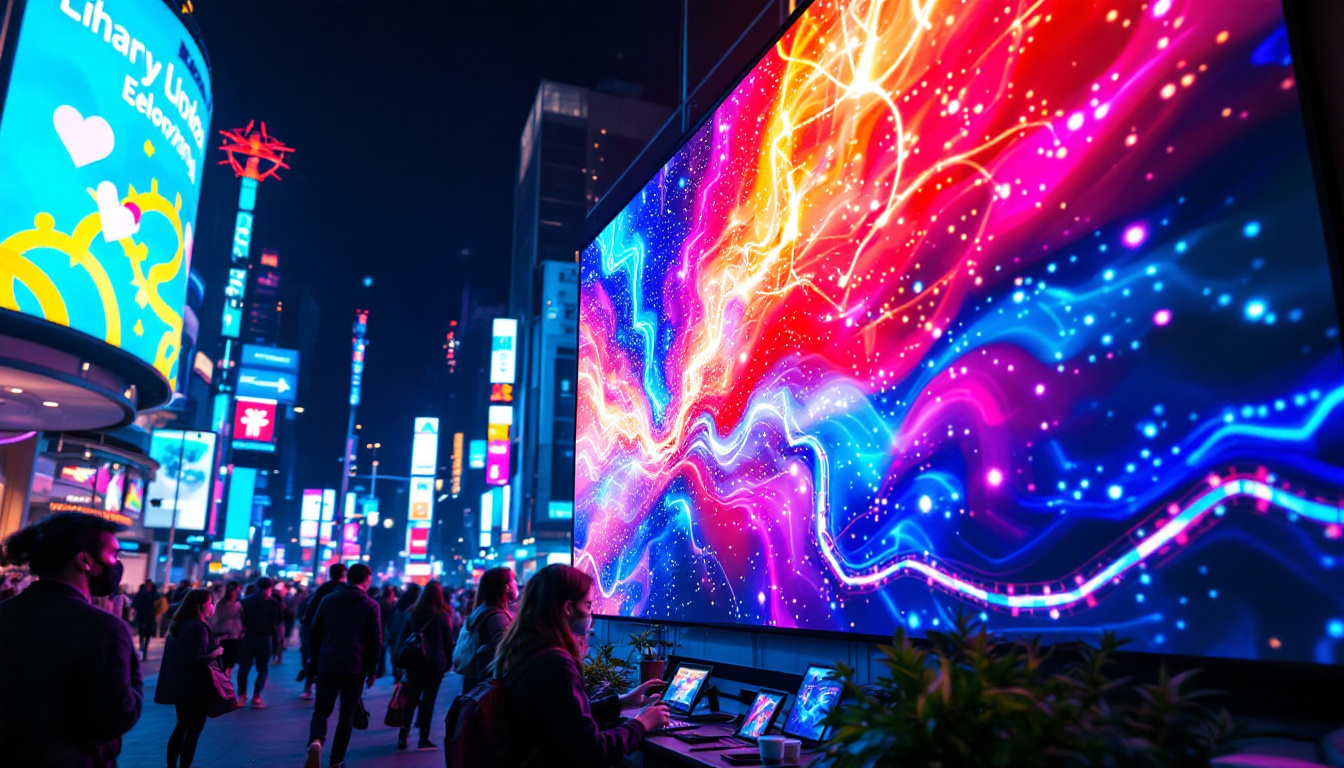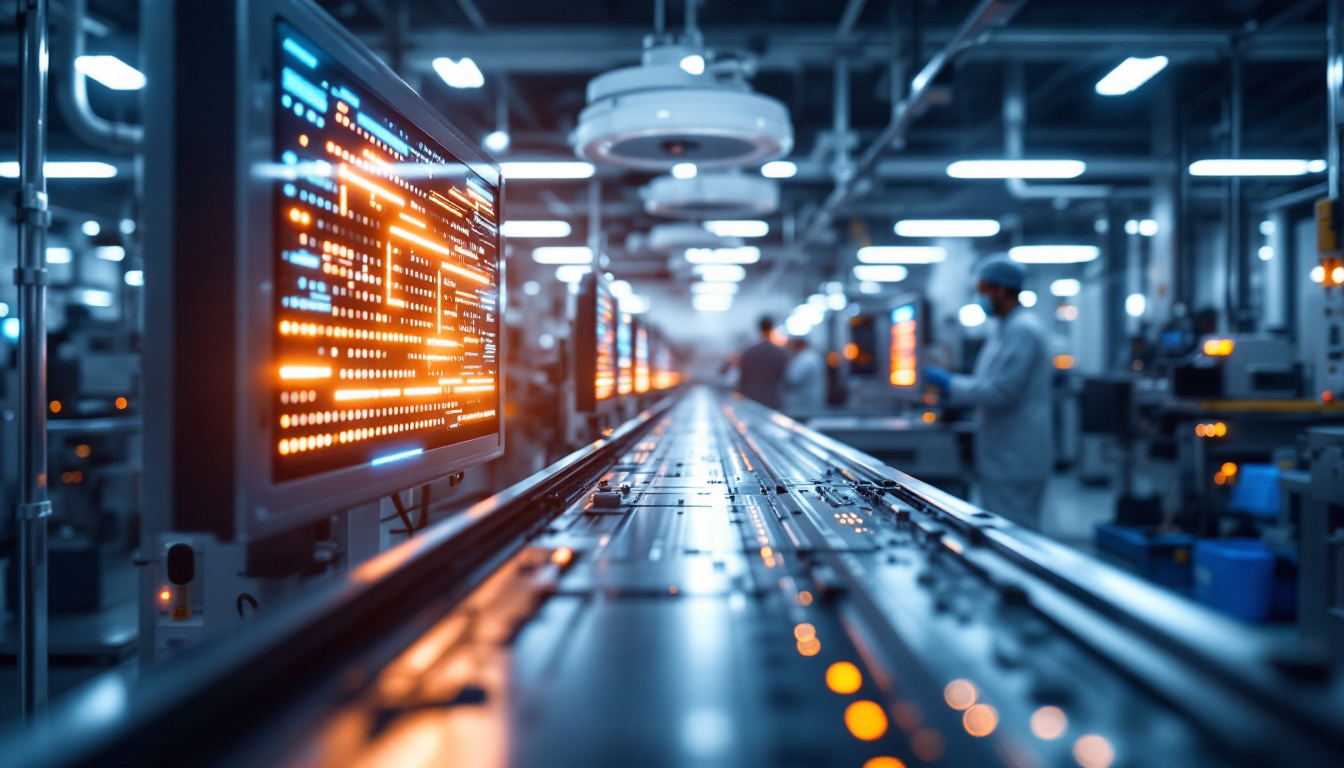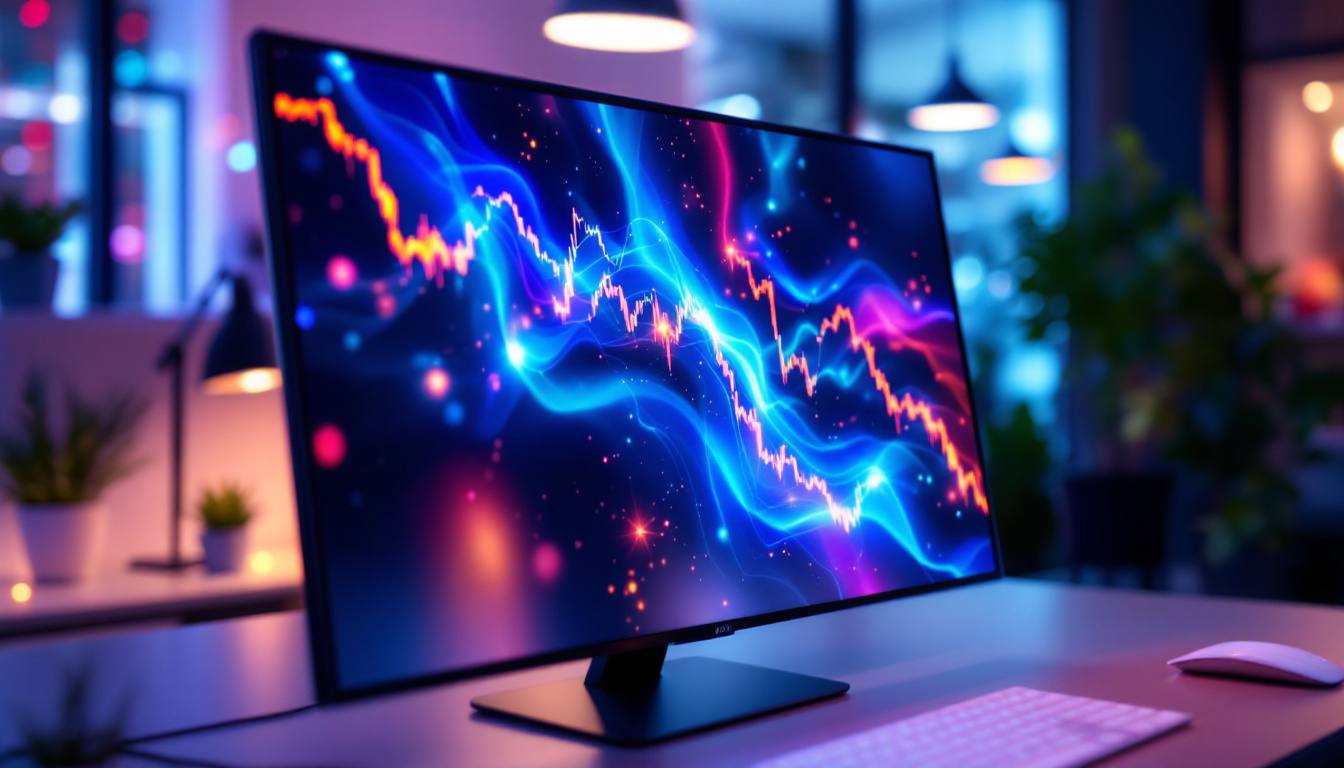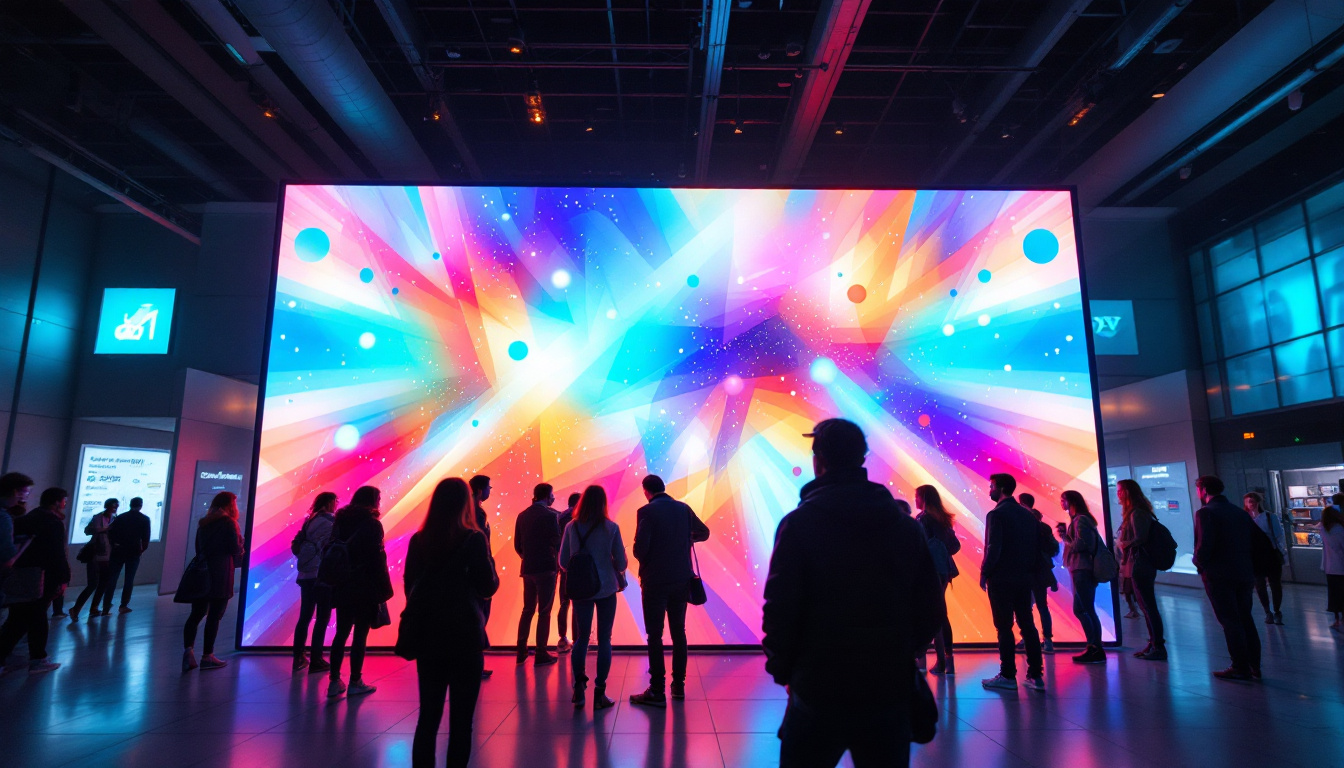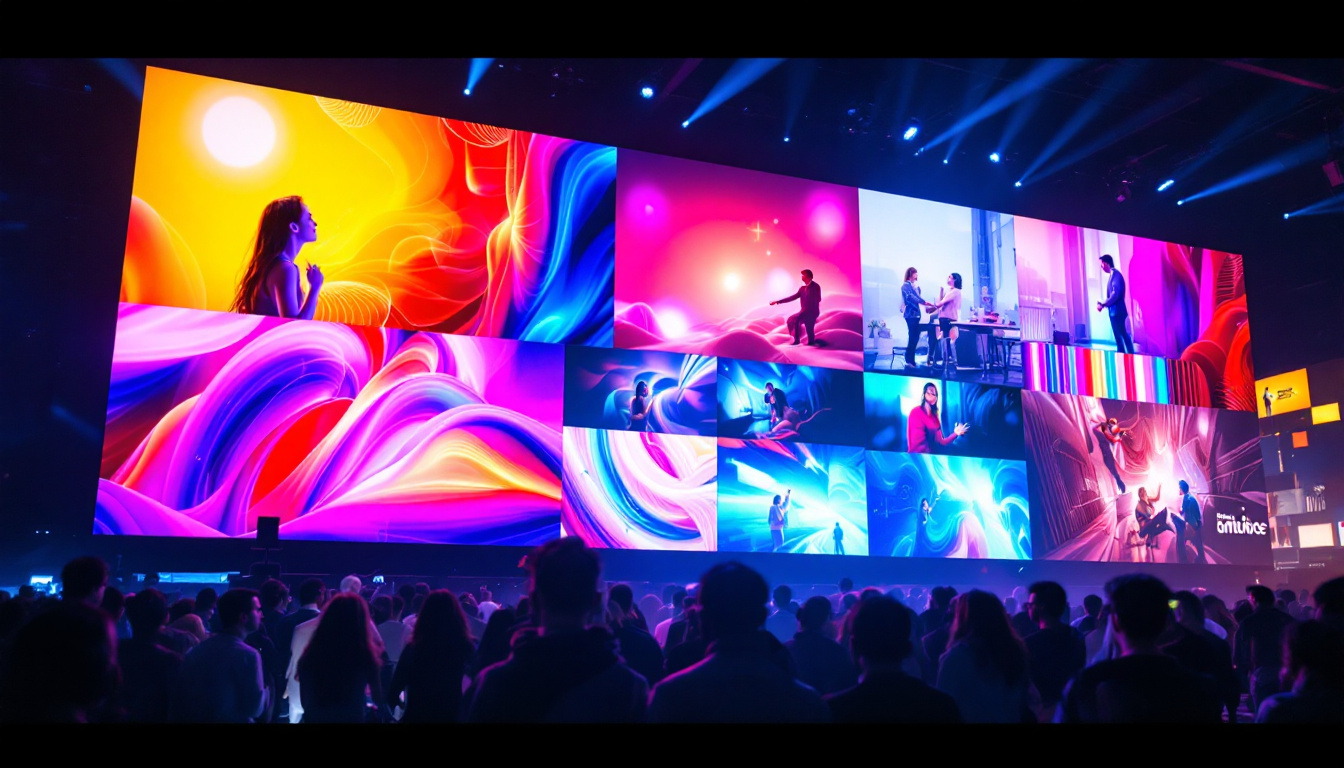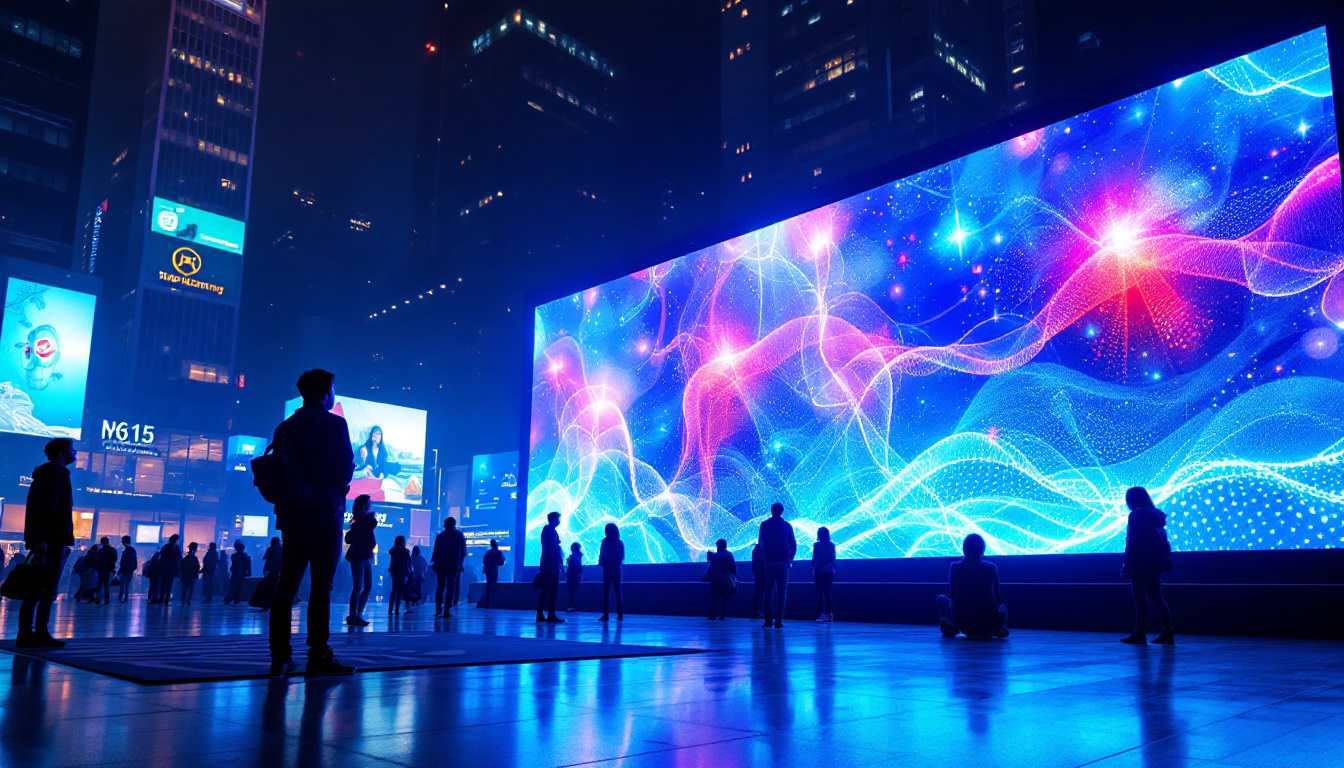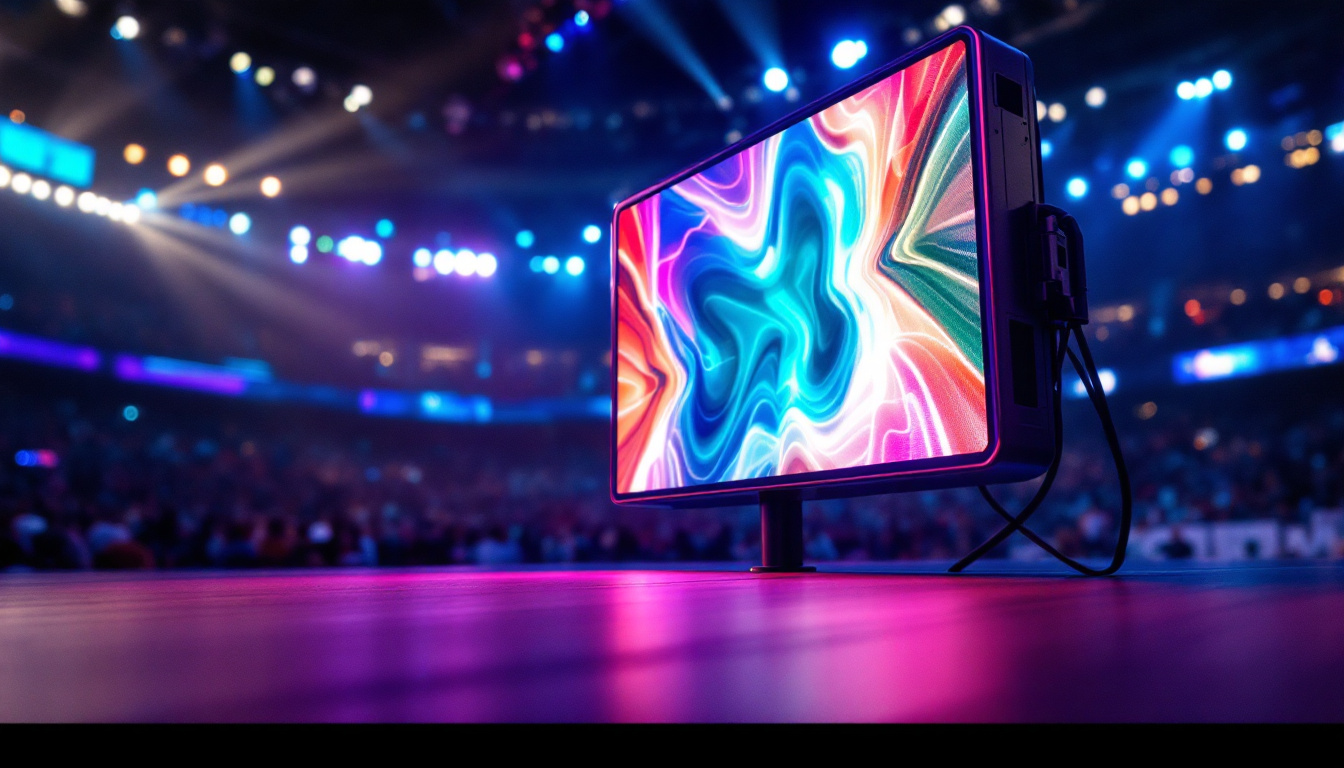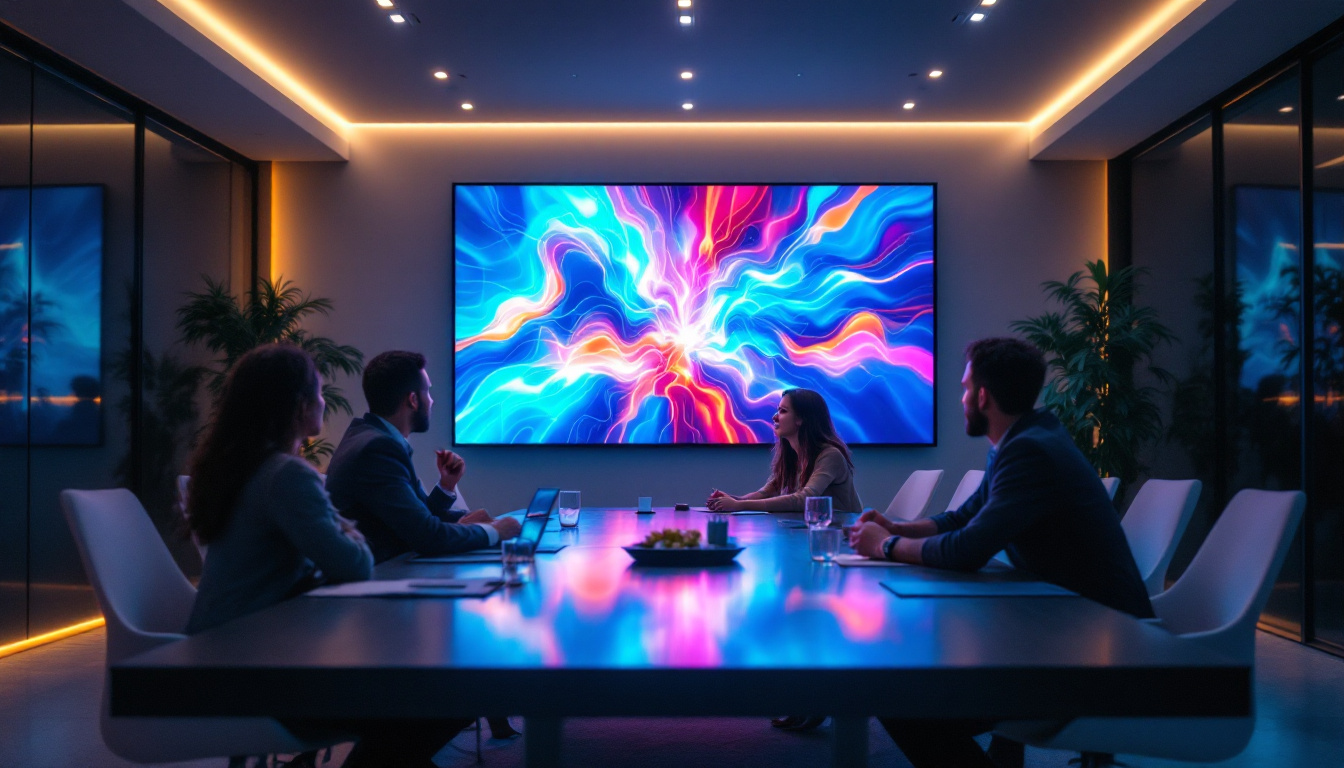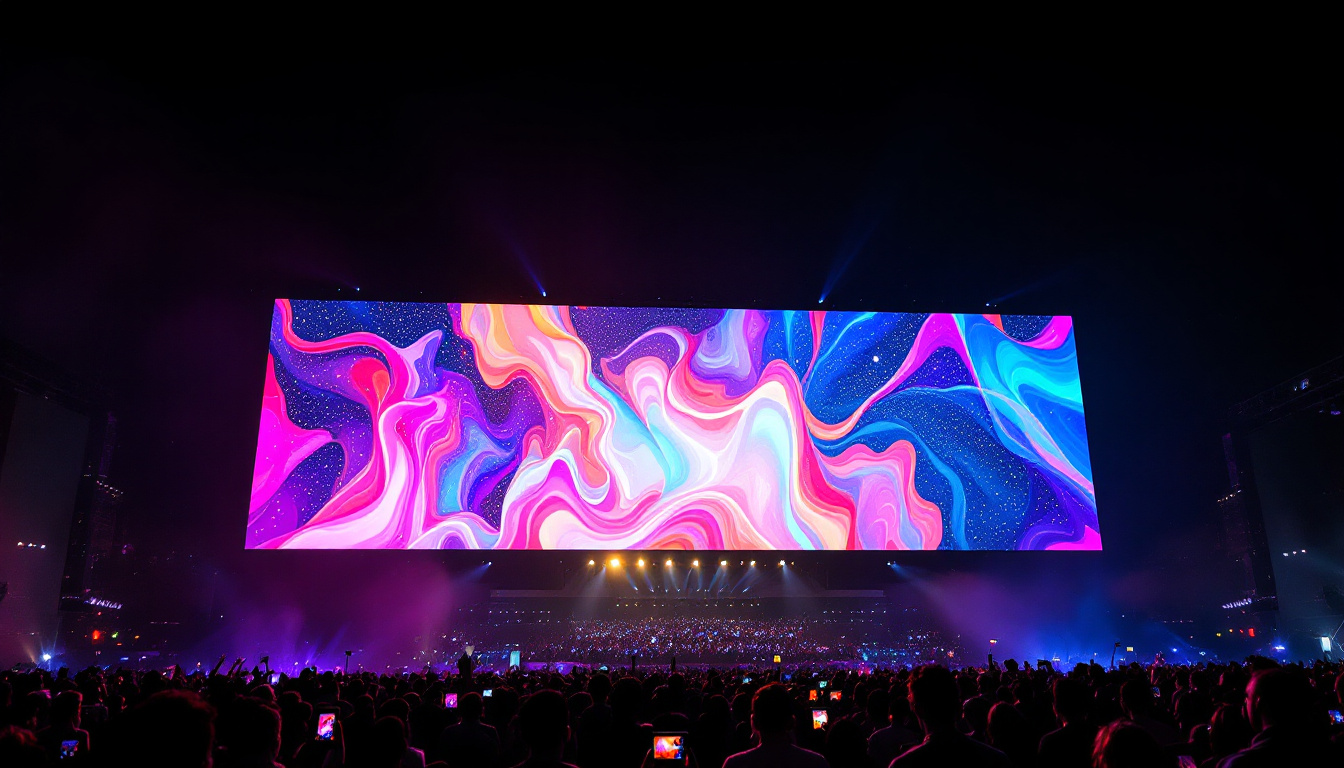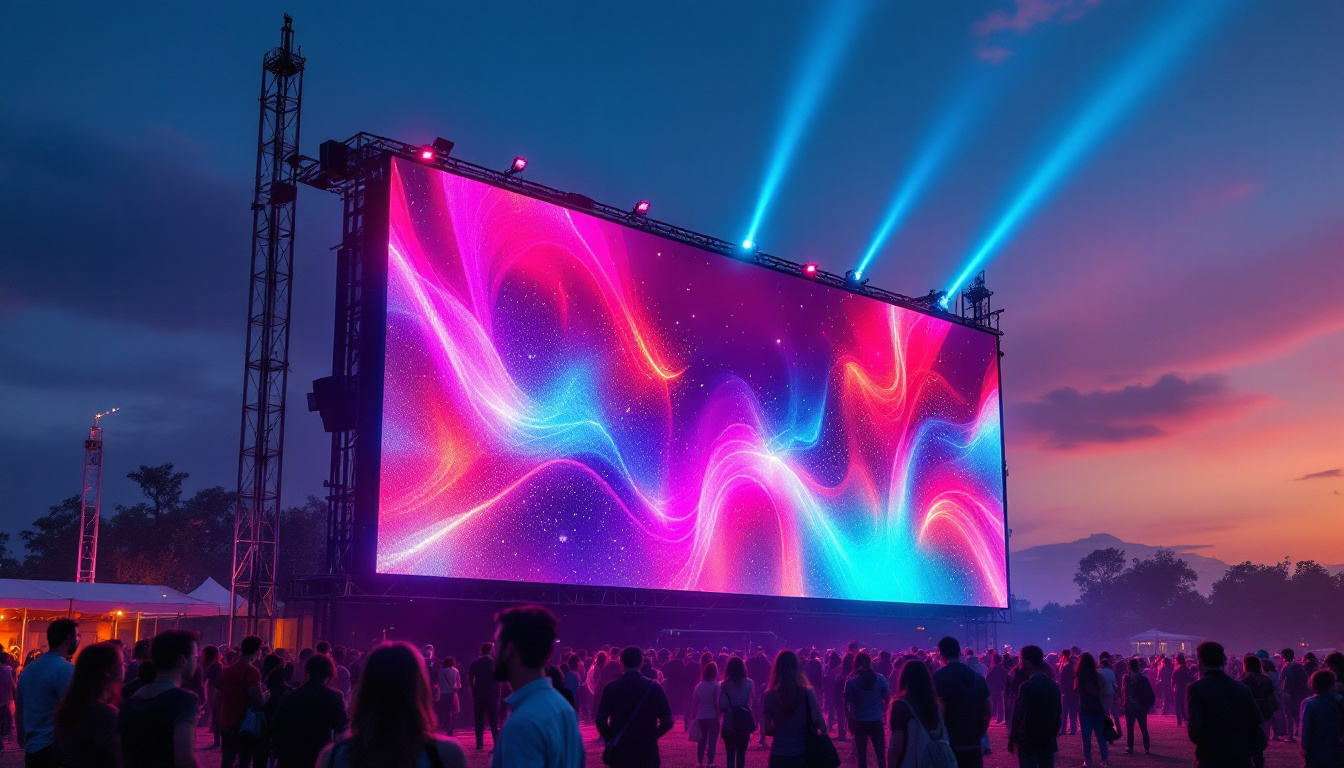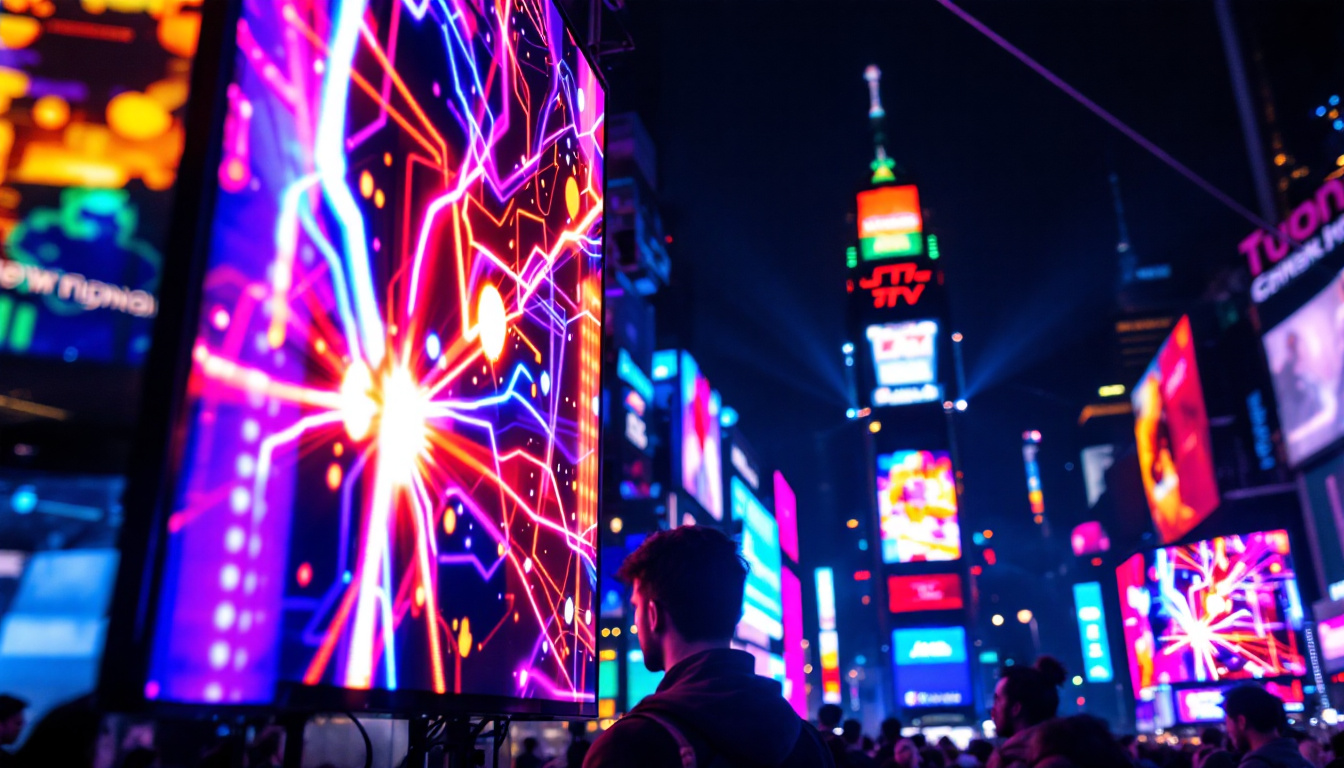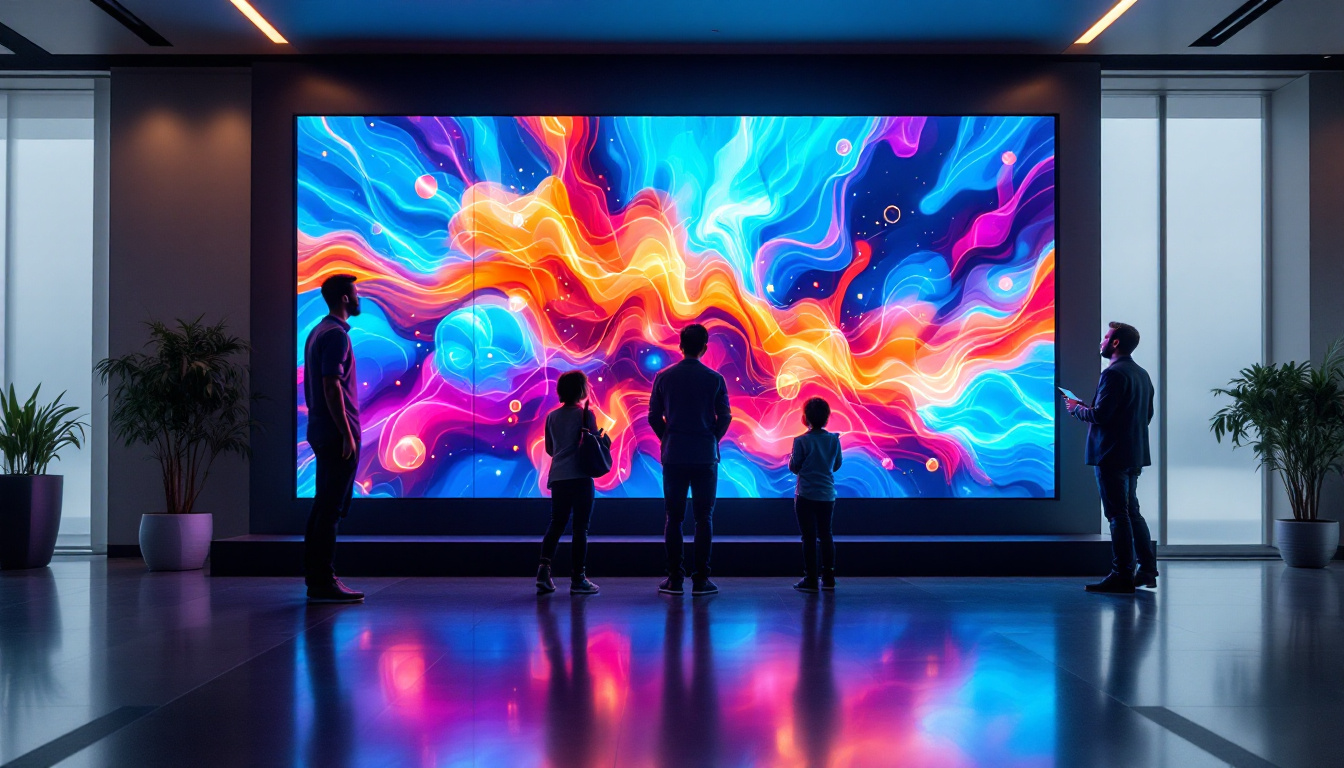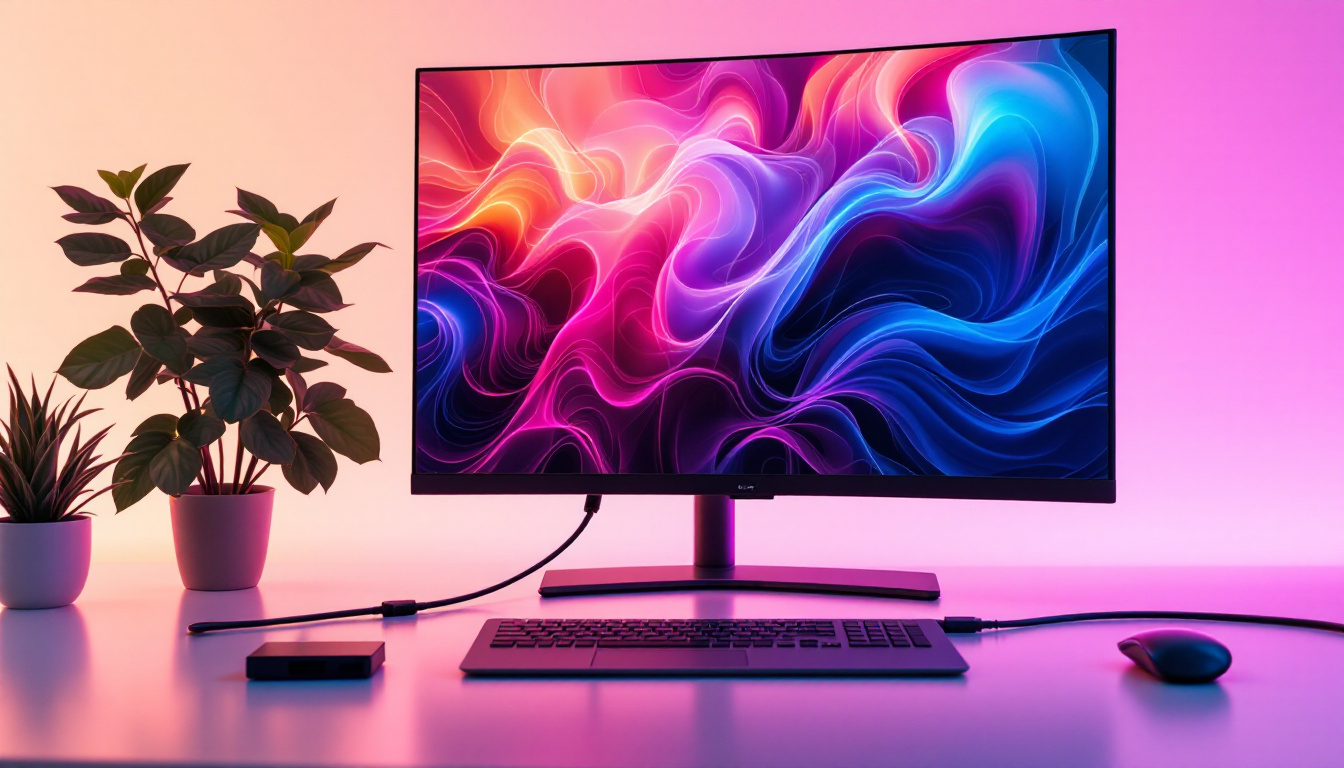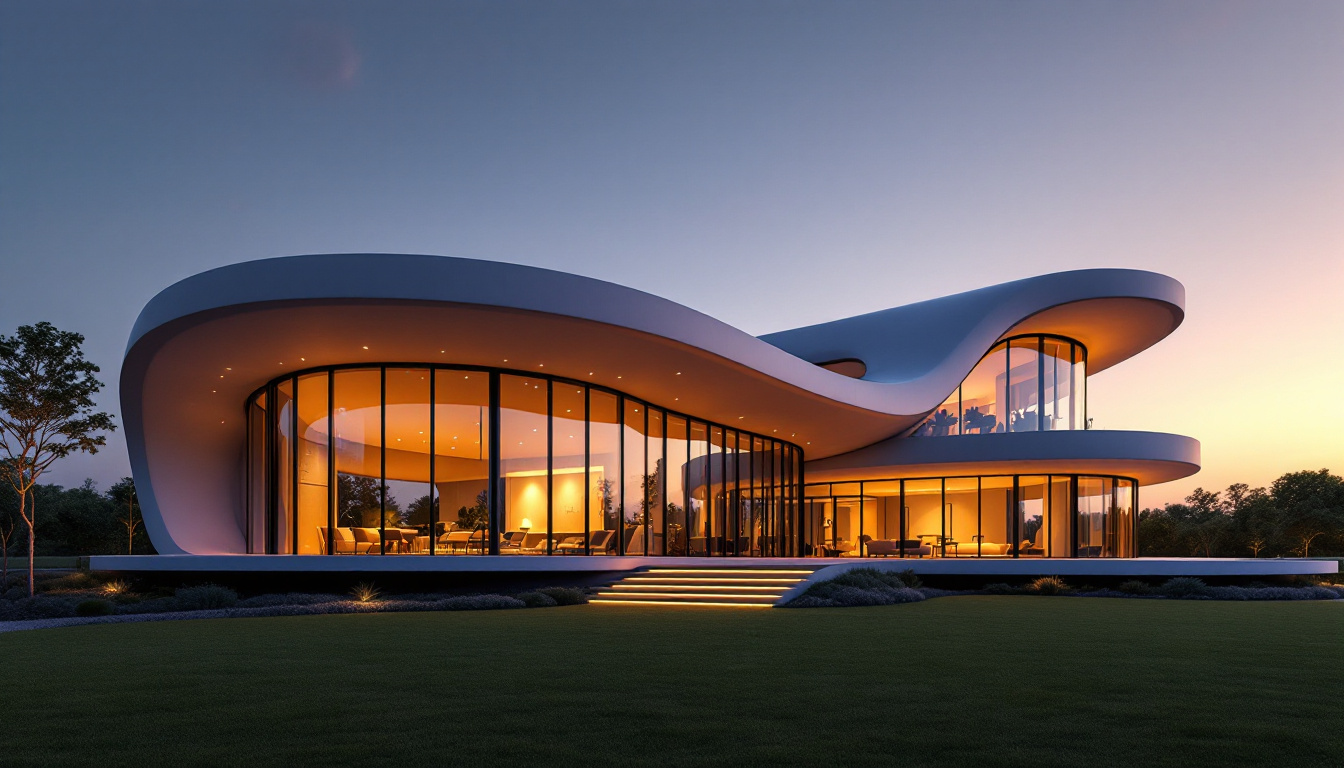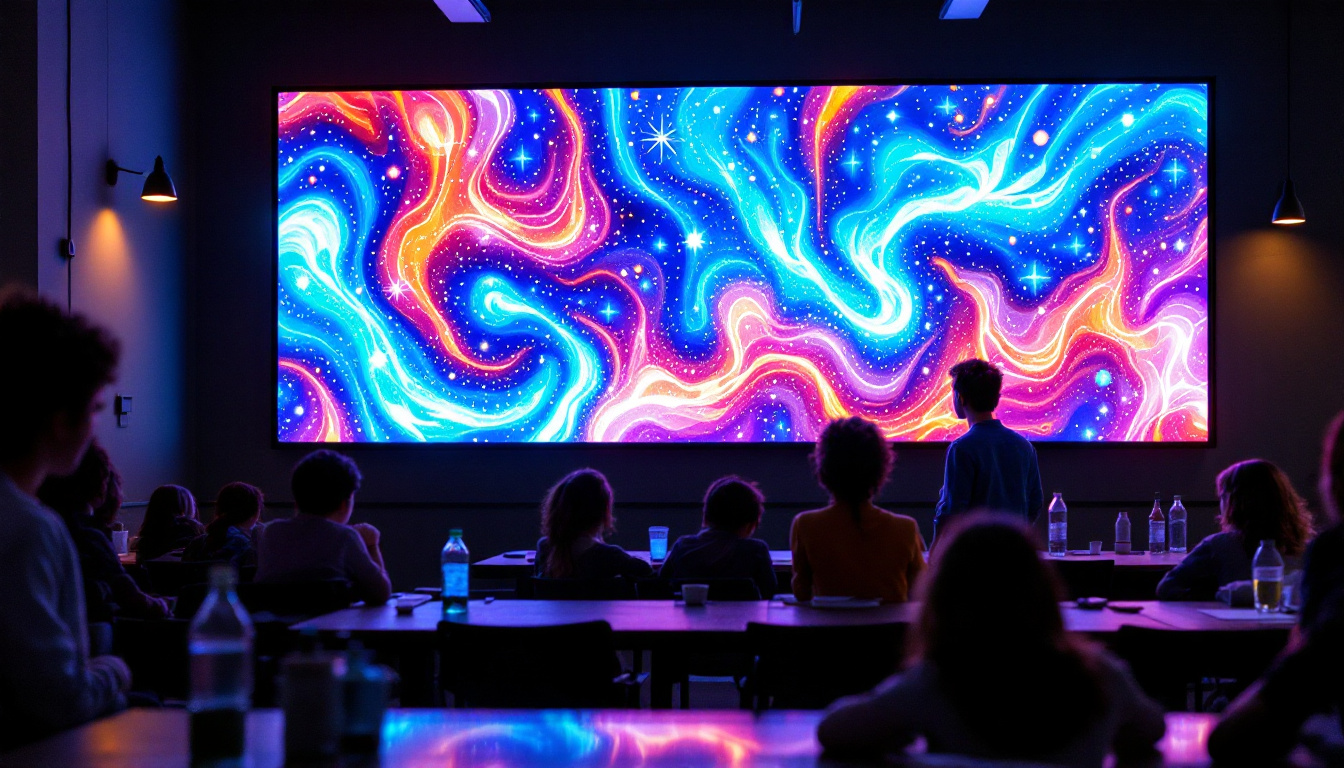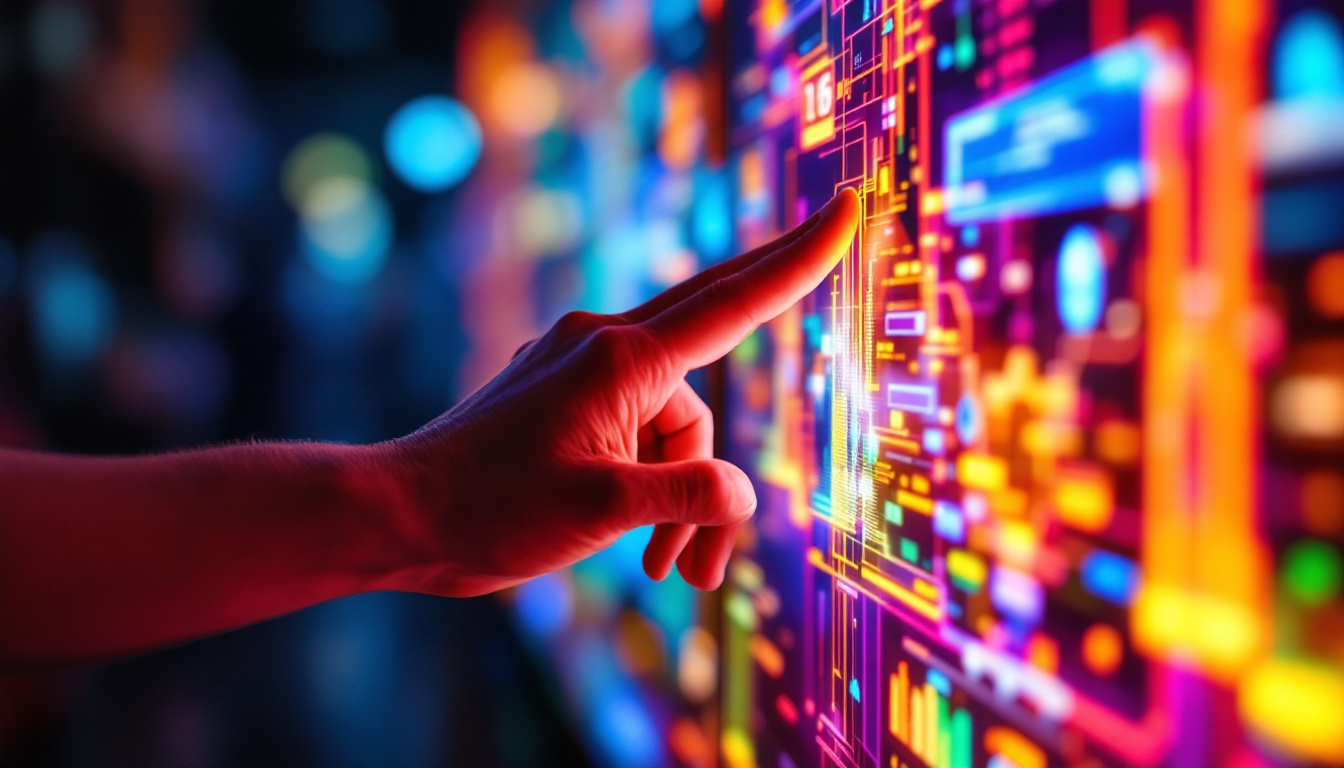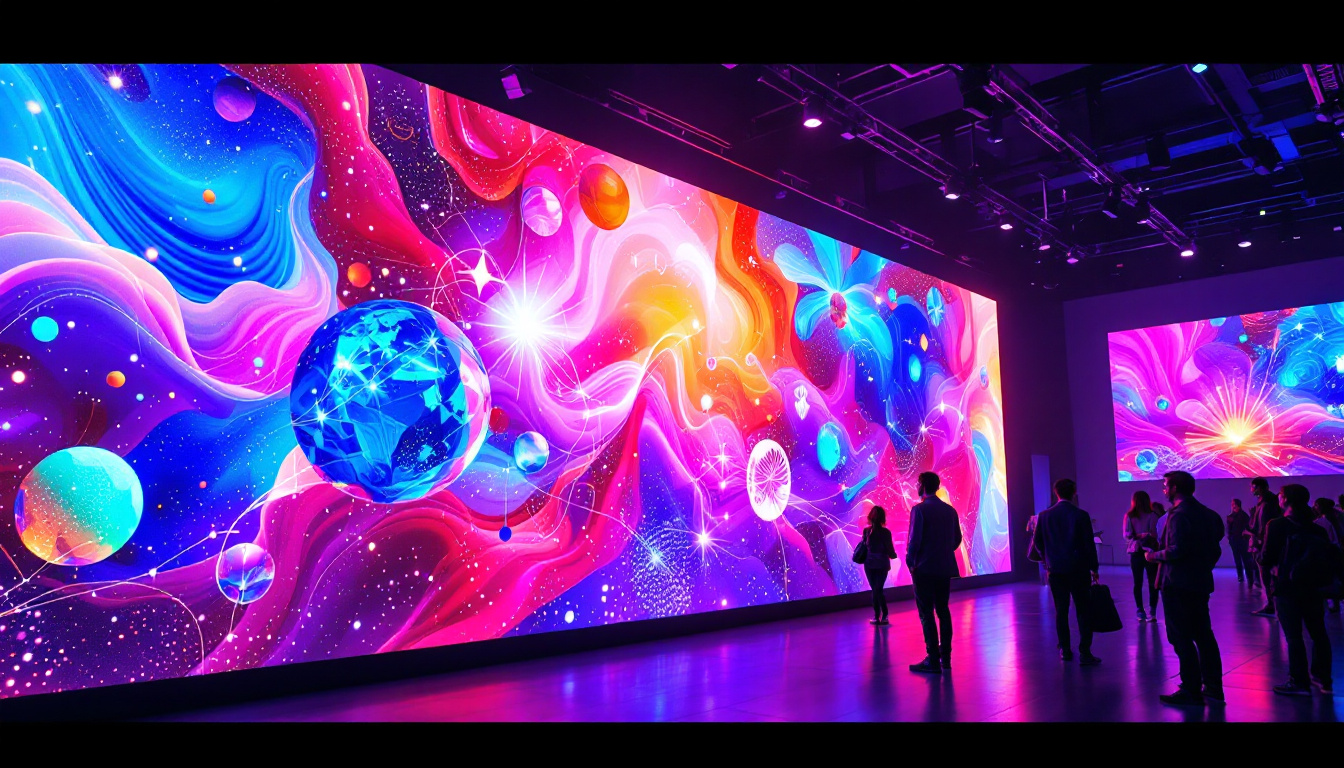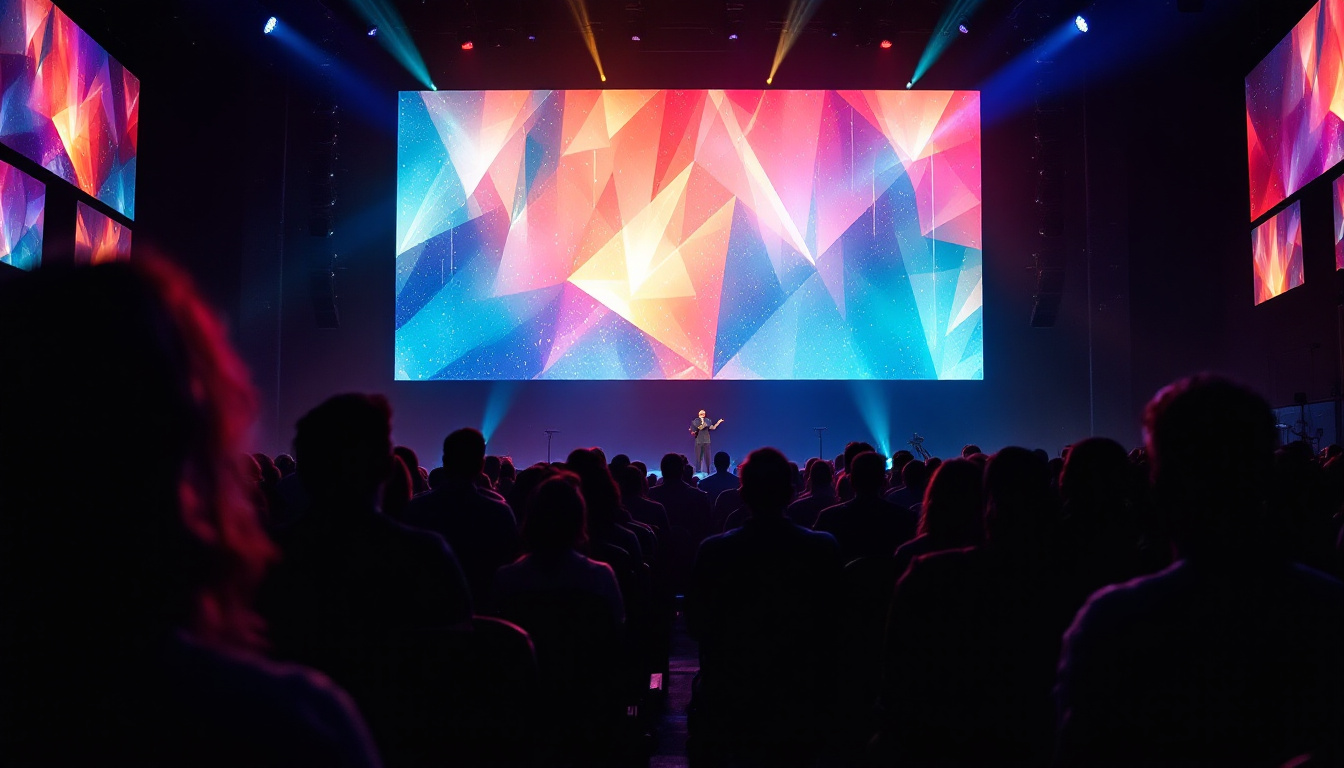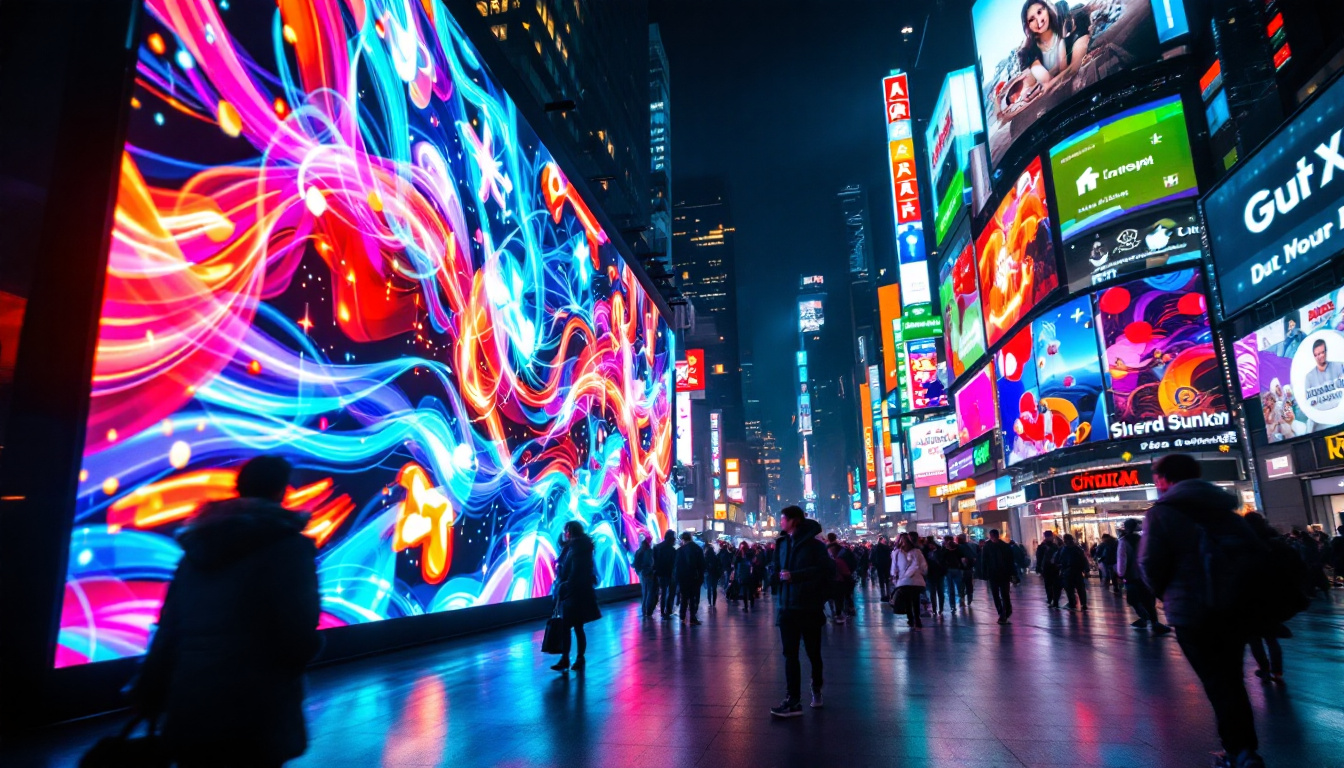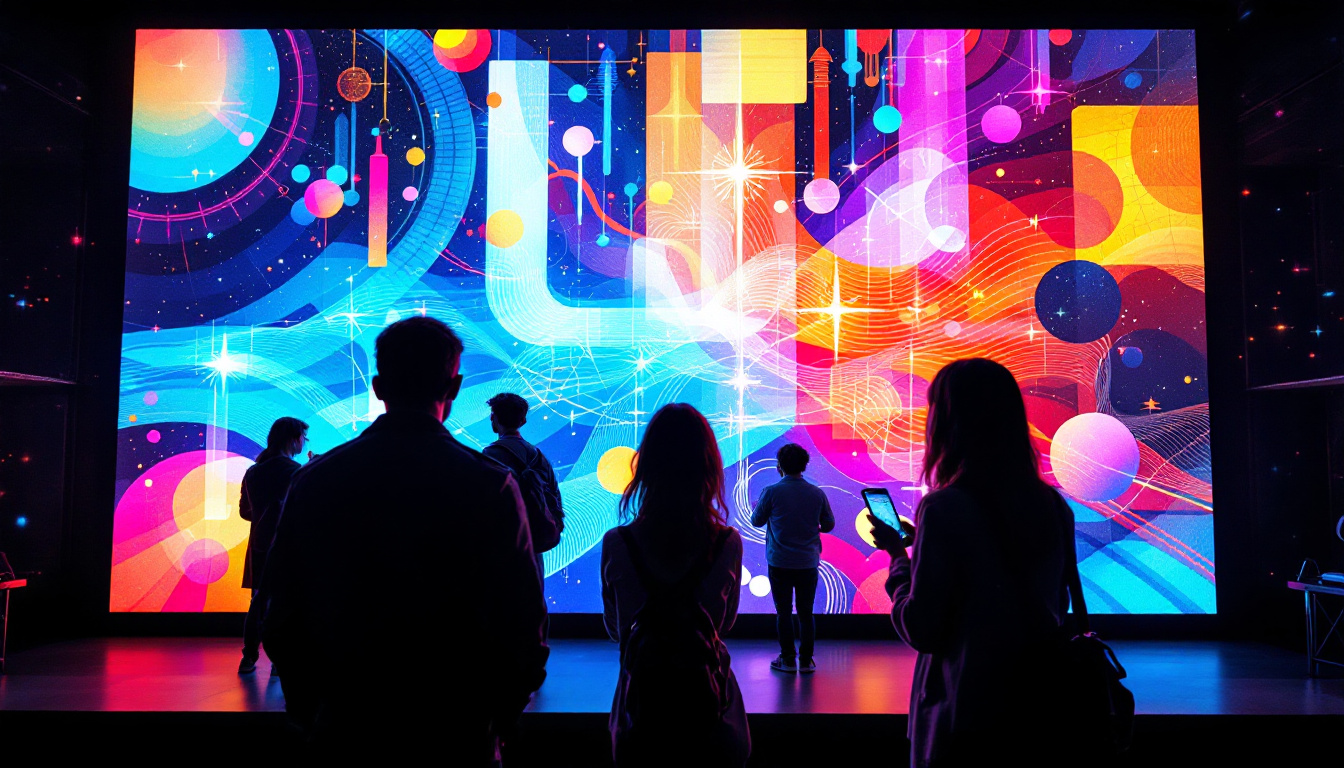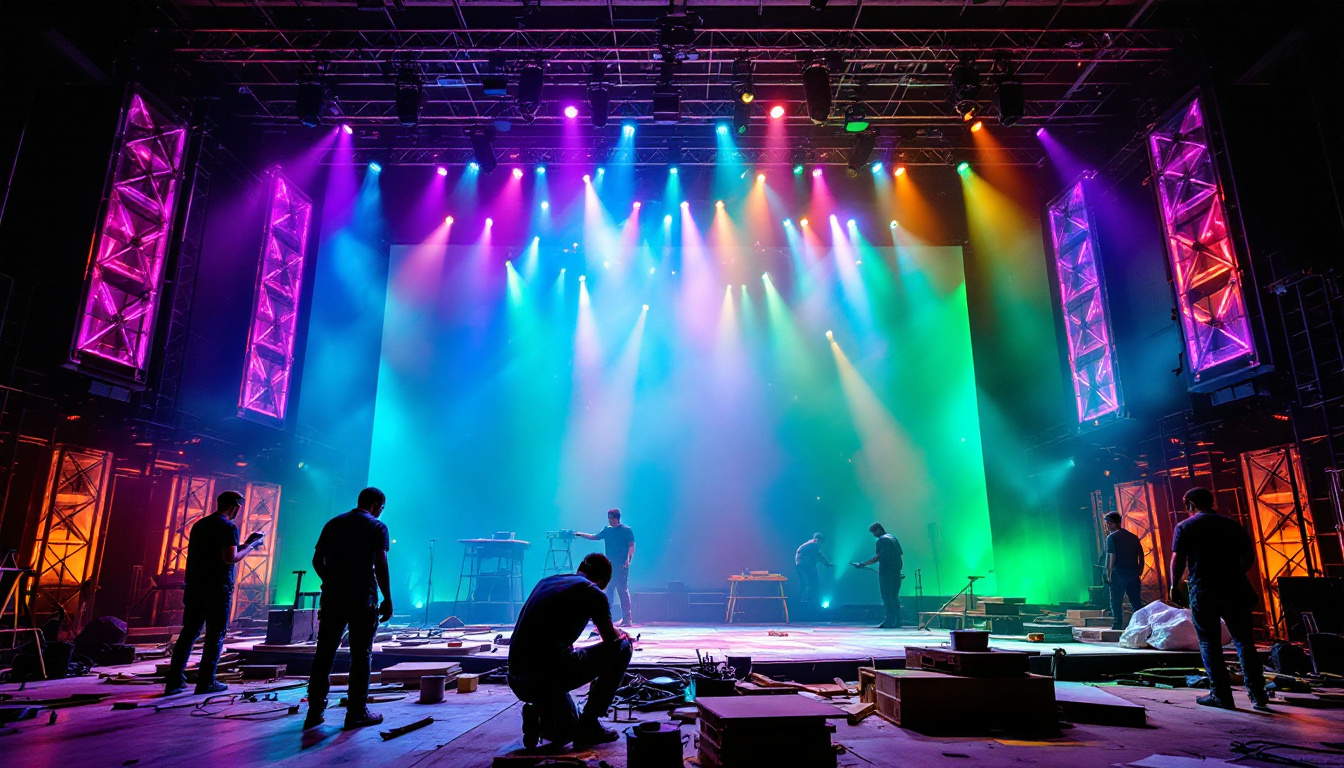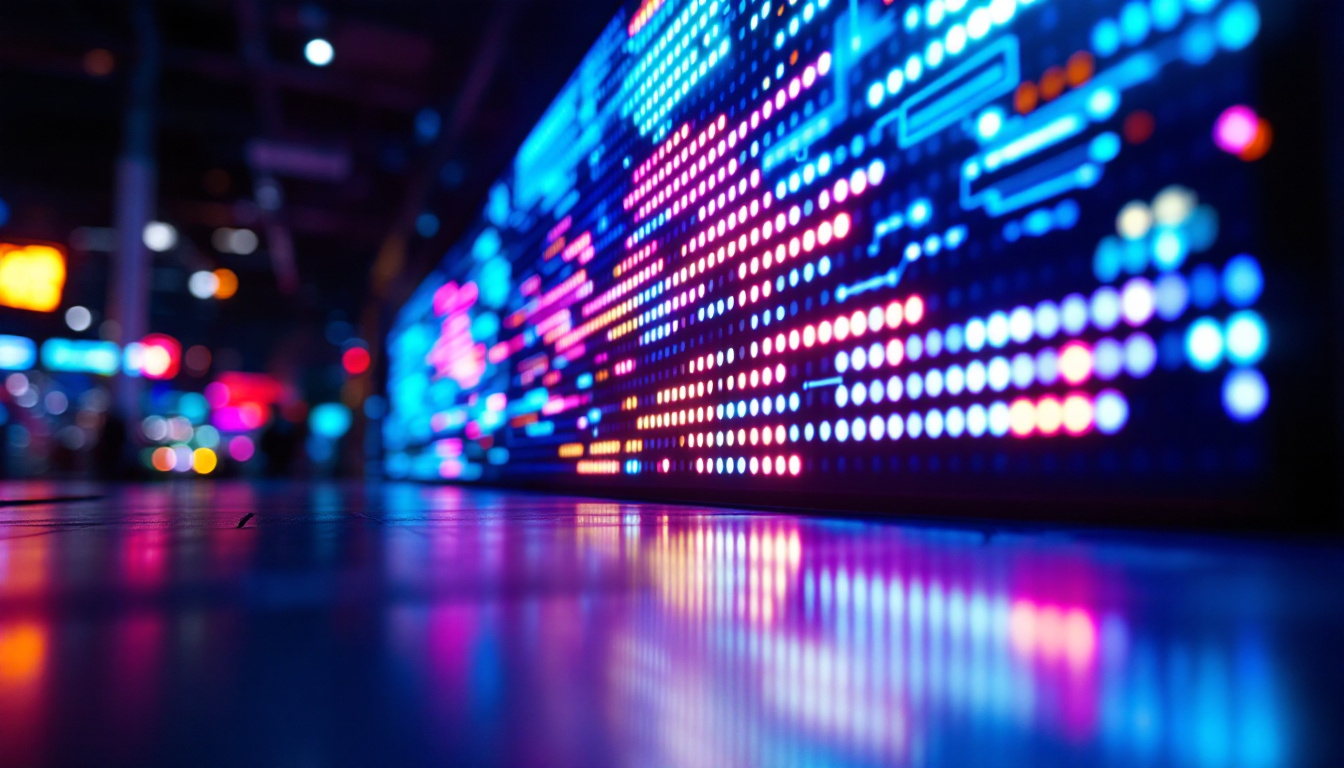In the modern world, LED displays have become a ubiquitous part of our daily lives. From advertising billboards to home entertainment systems, these vibrant screens have transformed the way information is presented and consumed. This article delves into the intricacies of LED wall mounts and the technology behind LED displays, offering insights into their functionality, benefits, and applications.
Understanding LED Technology
Light Emitting Diodes (LEDs) are semiconductor devices that emit light when an electric current passes through them. This technology has evolved significantly over the years, leading to the development of high-quality LED displays that are both energy-efficient and visually stunning. The transition from traditional incandescent bulbs to LED technology has not only transformed the lighting industry but has also paved the way for advanced applications in various fields, including automotive, medical, and architectural lighting.
The Basics of LED Displays
LED displays consist of numerous tiny LED bulbs arranged in a grid. Each bulb can emit different colors, allowing for the creation of full-color images and videos. The arrangement of these bulbs can vary, leading to different types of displays, such as direct view and backlit screens. The ability to control each individual LED’s brightness and color has revolutionized how visual content is presented, providing a level of detail and vibrancy that was previously unattainable with older technologies.
Direct view LED displays are made up of individual LED modules that are mounted together to form a larger screen. This type of display is often used in outdoor advertising and large venues due to its brightness and visibility from a distance. The pixel pitch, or the distance between the centers of two adjacent pixels, plays a crucial role in determining the display’s resolution and viewing distance. On the other hand, backlit displays use LEDs to illuminate an LCD panel, providing vibrant colors and contrast suitable for indoor environments. The combination of LED backlighting with LCD technology has improved energy efficiency and color accuracy, making it a popular choice for televisions and computer monitors.
Types of LED Displays
There are several types of LED displays, each designed for specific applications. The most common include:
- Indoor LED Displays: These displays are typically used in shopping malls, conference rooms, and theaters. They offer high resolution and brightness, making them ideal for close viewing. Their flexibility allows for creative installations, such as curved or shaped screens that enhance the viewer’s experience.
- Outdoor LED Displays: Built to withstand harsh weather conditions, outdoor displays are brighter and more durable. They are often used for billboards, sports arenas, and public events. The technology behind these displays includes advanced weatherproofing and anti-glare features, ensuring that the content remains visible even in direct sunlight or rain.
- Transparent LED Displays: These innovative displays allow light to pass through, making them suitable for retail environments where visibility of products behind the screen is essential. By blending digital content with the physical environment, transparent displays create a unique shopping experience that captivates customers and enhances product visibility.
Furthermore, the rise of flexible LED displays has opened new avenues for creativity in design. These displays can be bent or shaped to fit unconventional spaces, allowing for dynamic installations that can adapt to various architectural elements. As technology continues to advance, we can expect to see even more innovative applications of LED displays, including augmented reality experiences and interactive installations that engage audiences in new and exciting ways.
The Importance of LED Wall Mounts
While the technology behind LED displays is fascinating, the mounting solutions that support them are equally crucial. LED wall mounts play a significant role in ensuring that these displays are securely installed and positioned for optimal viewing.
What Are LED Wall Mounts?
LED wall mounts are specialized brackets or frames designed to hold LED displays. They come in various styles and sizes to accommodate different screen dimensions and weights. The choice of wall mount can significantly impact the overall viewing experience, as well as the safety and longevity of the display.
These mounts can be fixed, tilting, or full-motion, allowing for flexibility in positioning the display. Fixed mounts keep the screen in a stationary position, while tilting mounts enable slight adjustments for better viewing angles. Full-motion mounts allow for extensive movement, making them ideal for multi-purpose spaces.
Benefits of Using LED Wall Mounts
Utilizing LED wall mounts offers several advantages that enhance both functionality and aesthetics:
- Space Efficiency: Wall mounts free up valuable floor space, making them ideal for environments with limited room.
- Improved Viewing Angles: Properly mounted displays can be adjusted to provide the best viewing angles for audiences, ensuring that everyone can enjoy the content being presented.
- Safety and Stability: High-quality mounts securely hold the display in place, reducing the risk of accidents or damage.
Installation Considerations
Installing an LED wall mount requires careful planning and consideration. Proper installation ensures that the display functions optimally and remains safe for users.
Choosing the Right Mount
When selecting a wall mount for an LED display, it is essential to consider several factors:
- Weight Capacity: Ensure that the mount can support the weight of the display. Overloading a mount can lead to failure and potential damage.
- Screen Size Compatibility: Verify that the mount is compatible with the dimensions of the LED display. Mismatched sizes can lead to installation challenges.
- Mounting Location: Consider the environment where the display will be installed. Indoor and outdoor mounts have different requirements based on exposure to elements.
Installation Process
The installation process for an LED wall mount typically involves the following steps:
- Preparation: Gather all necessary tools and materials, including the wall mount, screws, and a level.
- Locate Studs: Use a stud finder to locate wall studs, ensuring a secure attachment point for the mount.
- Attach the Mount: Follow the manufacturer’s instructions to attach the mount to the wall, ensuring it is level and securely fastened.
- Hang the Display: Carefully hang the LED display on the mounted bracket, ensuring it is properly secured.
Applications of LED Displays
LED displays have a wide range of applications across various industries. Their versatility and visual appeal make them suitable for numerous settings.
Advertising and Marketing
One of the most prominent uses of LED displays is in advertising. Businesses leverage these vibrant screens to capture attention and convey messages effectively. Outdoor LED billboards, for instance, can display dynamic content that changes throughout the day, attracting more viewers than traditional static advertisements.
In retail environments, LED displays are used for promotional content, product showcases, and interactive experiences. Their ability to engage customers can significantly enhance the shopping experience and drive sales.
Entertainment and Events
In the entertainment industry, LED displays are integral to concerts, sports events, and festivals. Large-scale LED screens are often used to broadcast live performances, ensuring that audiences can see the action from any angle. Additionally, LED technology allows for stunning visual effects that enhance the overall experience.
Event organizers also utilize LED displays for information dissemination, such as schedules, directions, and safety announcements, ensuring that attendees are well-informed throughout the event.
Corporate and Educational Settings
In corporate environments, LED displays are increasingly used for presentations, meetings, and collaborative work. Their clarity and brightness make them suitable for conference rooms, where visual aids can enhance communication and understanding.
educational institutions also benefit from LED displays in classrooms and auditoriums. These screens can be used to present lectures, educational videos, and interactive content, making learning more engaging for students.
Future Trends in LED Display Technology
The LED display industry is continuously evolving, with advancements in technology leading to new possibilities. Several trends are shaping the future of LED displays and wall mounts.
Higher Resolution and Pixel Density
As technology advances, the demand for higher resolution displays is increasing. Manufacturers are developing LED displays with improved pixel density, resulting in sharper images and more detailed visuals. This trend is particularly important for applications where clarity is paramount, such as medical imaging and high-end advertising.
Smart LED Displays
The integration of smart technology into LED displays is another exciting trend. Smart displays can connect to the internet, allowing for real-time content updates, remote management, and interactive features. This capability is especially beneficial for businesses that require dynamic advertising solutions or organizations that need to display constantly changing information.
Eco-Friendly Solutions
As sustainability becomes a priority for many industries, manufacturers are focusing on creating eco-friendly LED displays. This includes using recyclable materials, reducing energy consumption, and implementing technologies that minimize environmental impact. Such innovations not only benefit the planet but can also lead to cost savings for businesses in the long run.
Conclusion
LED wall mounts and displays represent a significant advancement in visual technology, offering unparalleled brightness, clarity, and versatility. Understanding the intricacies of LED technology, the importance of proper mounting, and the various applications can help businesses and individuals make informed decisions when investing in these systems.
As the industry continues to evolve, staying abreast of the latest trends and innovations will be essential for maximizing the potential of LED displays. Whether for advertising, entertainment, or educational purposes, the impact of LED technology is undeniable, shaping the way information is shared and experienced in the modern world.
Discover Cutting-Edge LED Solutions with LumenMatrix
Ready to elevate your visual experience with the latest in LED technology? LumenMatrix is at the forefront of innovation, offering a diverse range of LED display modules tailored to your needs. From vibrant Indoor and Outdoor LED Wall Displays to dynamic Vehicle and Sports LED Displays, our solutions are designed to captivate and engage. Explore our LED Poster Displays, Floor LED Displays, and Custom LED solutions that promise to transform your space and message. Embrace the future of visual communication with our All-in-One and Transparent LED Displays. Check out LumenMatrix LED Display Solutions today and make a lasting impression with unparalleled brightness, clarity, and versatility.

